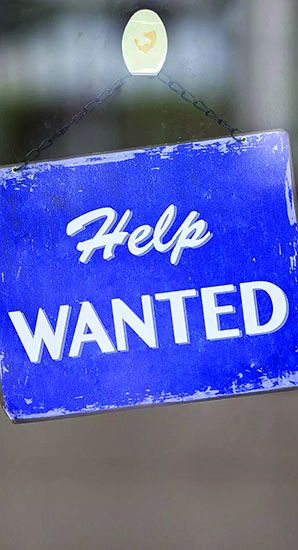I’ve often criticized airlines large and small over their flight crew hiring practices and, especially, the boom-and-bust nature of their characteristic binges when times are good and furloughs when they aren’t. We’re still mired in one of those cycles, thanks to the Covid-19 pandemic, when no one was traveling and thousands of pilots were either laid off indefinitely or chose to retire. Determined to do something even if it’s wrong, some have gone so far as to recommend relaxing training and experience standards to put more warm bodies in the cockpit.
Pilots are not the only aviation workers in short supply. Air traffic controllers also are in demand. The FAA in August announced it had met its target of hiring 1500 new controllers by the end of FY2023, and plans to hire another 1800 in FY2024. They’ll join another 1000 or so trainees already in the pipeline, which takes from six months to three years, depending on previous experience and their assigned ATC facility. According to the agency, the Covid-19 pandemic forced the FAA to close its academy for six months in 2020 and pause on-the-job training at facilities for almost two years.
Given the frequency and severity of some near-misses at airports throughout U.S. during 2023, this is welcome news. Many of the reported incidents seemingly involved either overworked or under-experienced controllers who let things get out of hand. As a rule, pilots were not immune to errors, but their operational skepticism and quick thinking often was critical to the outcome.
During the pandemic, the FAA metered traffic entering some regions that were short-staffed. Those traffic-management initiatives continue at facilities where the number of available controllers is out of sync with the workload. And it’s not at all clear to many observers that other ATC facilities are adequately staffed.
Pilots and controllers are two of the most visible jobs in aviation, and their front-line status drives a lot of the mass media’s coverage of industry employment. There are, of course, many other professions making contributions to aviation. While shortages in the pilot and controller workforce are grabbing lots of attention, technicians of all sorts also are in high demand.

Almost without fail, recent conversations I’ve had with FBOs, training organizations and small flight schools involve some degree of concern over the number and availability of qualified, experienced technicians to inspect and maintain their fleets, especially now as strong pilot training activity continues to create high demand for their services. Take it from this aircraft operator: Finding and keeping a good mechanic is more important than ever.
Now that so many of the flight instrument systems in even older airplanes are electronic—with video screens instead of vacuum pumps—skilled technicians are in even greater demand. It’s one thing to be able to time a magneto or fabricate a flush patch when an antenna is removed; it’s quite another to be able to initialize and customize a newly installed glass panel after building the harness connecting all the modules. Both skills are important to the industry and, increasingly, the market would like to have them in the same employee.
There is good news on this front. I’m seeing more and more aviation-specific training and educational opportunities for young people about to enter the workforce and for those already in it, but looking for new challenges. One example isn’t new, but is mature and have an impact.
That’s the Aerospace Center for Excellence, on the SUN ‘n FUN Expo Campus in Lakeland, Florida. The facility is built on relationships with the Central Florida Aerospace Academy, a Polk County Public High School Career Academy, and Florida Air Museum, the state’s official aviation museum. During this year’s fly-in, I got a quick tour of the facilities and came away impressed with the array of STEM learning environments.
Another program with which I recently became familiar is in the Detroit, Michigan, area: The Davis Aerospace Technical High School. Students there have the opportunity to join its Career and Technical Education Flight Training program, providing a background in a variety of concepts and regulations related to unmanned and manned flight. The school offers extensive training in UAS operation, and seniors can prep for their FAA remote pilot certificate, a ready-made job opportunity.
Although it will take this industry a while to dig out of its hole, not all of the employment news is gloomy.
— Jeb Burnside




